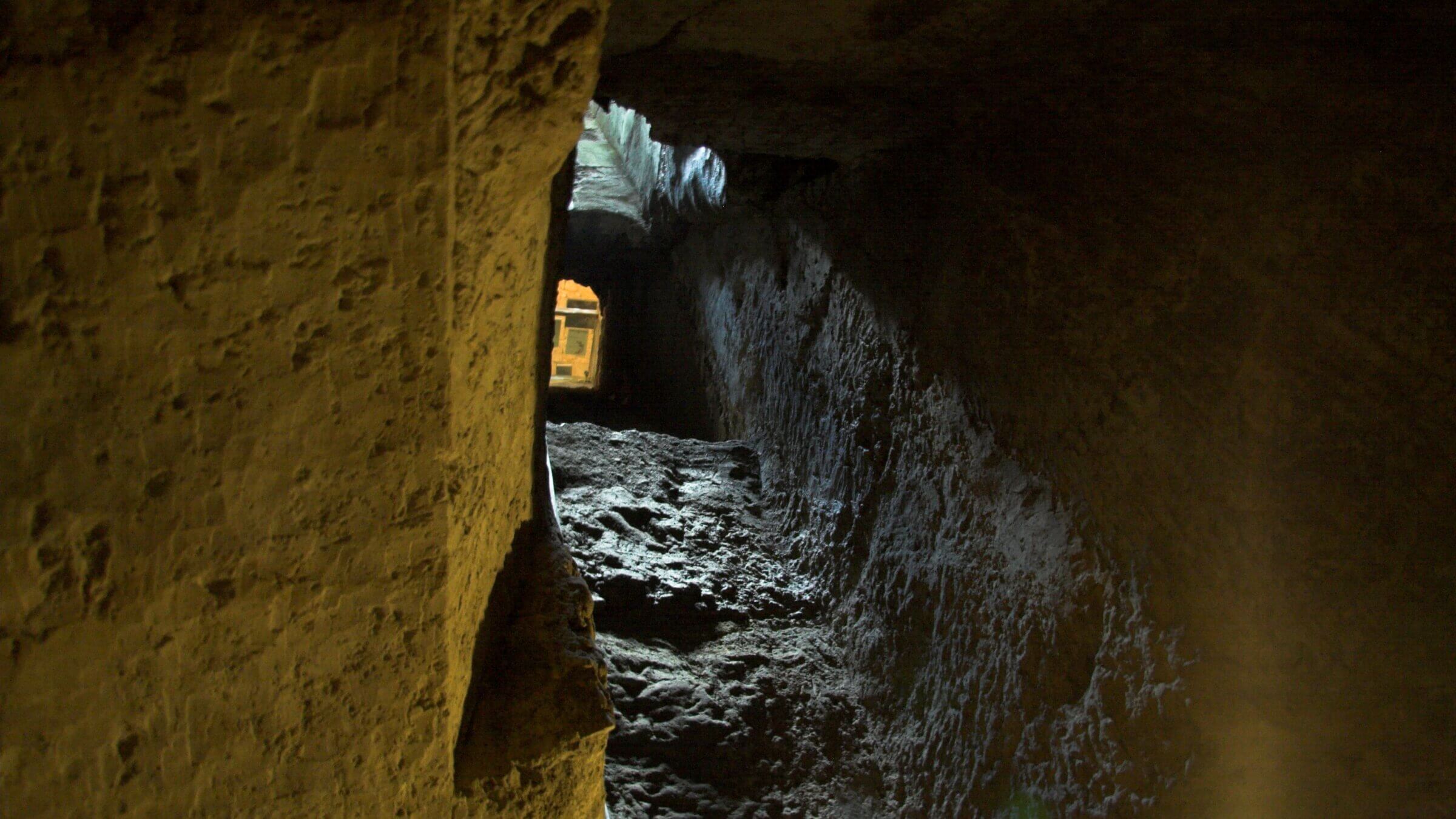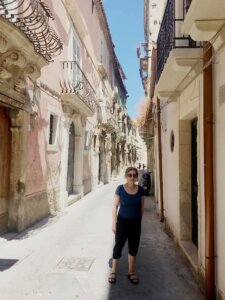This mikvah was hidden for 500 years — it’s still a place for purification and connection
In Sicily, at Europe’s oldest surviving ritual bath, a chance encounter that maybe wasn’t so chance, after all

Located in Ortygia, this Sicilian mikvah was in continuous use for almost 1,000 years until the 15th century, when it had to be abandoned. Photo by Wikimedia Commons
I wasn’t at the mikvah for a purifying experience.
My husband Martin and I were in Ortygia, in Italy, which has the oldest surviving ritual bath, not just in Sicily, but in all of Europe. You wouldn’t call us observant Jews, but we both enjoy observing Jewish sites of interest when we travel. We were waiting for the guide to arrive when I noticed a woman who looked like someone who would be my friend. She introduced herself as Raya.
During my single years, I’d sometimes spot a guy and, without exchanging a word, felt sure he would be perfect for me. I was wrong 100% of the time. My experiences with women were more reliable, so I trusted the instant affection I felt for Raya. A few longtime, meaningful friendships have started this way, but she and I wouldn’t be getting together for coffee and schmoozes. She lived in Lithuania and I’m a New Yorker.
“This is my first time at a mikvah,” Raya said.
“I went before we got married,” I told her. “When we met with the rabbi who’d be officiating, he asked about our religious practices. I was sheepish about my answers and tried to redeem myself by saying I’d go to the mikvah.”
A secret site revealed
The guide appeared and warned our small group to be careful: “We’ll be going down the original steps. They’re narrow and slippery.” This part of Sicily was associated with the ancient Greeks and Romans, so I was surprised to learn there has been a Jewish presence on the island for over 1,400 years, long before the arrival of Christianity on these shores.

This site dates back to the sixth century. It was in continuous use for almost 1,000 years until the 15th century, when it had to be abandoned. The Jews that remained here, who accounted for a quarter of Ortygia’s residents, faced execution unless they converted to Catholicism. When they were expelled from Spanish-controlled Sicily in 1492, they were forced to flee or hide their faith. They hid the mikvah, using tons of stone and sand to fill in the entrance and create a courtyard patio, preserving the mikvah 60 feet below.
It remained hidden until 1989, when it was discovered by chance. Amalia Daniele di Bagni purchased a house in the Giudecca area and was restoring it. Curious about the unusual structural elements of the house, she had a builder break through the wall and they came across a small staircase leading down to a kind of a basement area with the mikvah.
There were five immersion pools and three triangular pools in the main chamber, where there was also a round pool that served as a reservoir. On each side of the main chamber was a small side chamber that had a square pool once used by priests or other important individuals, almost exclusively male. In the center of the main room were three “plunge” pools where Jewish women once bathed. The other smaller, more private rooms (with tiny pools) jutting off from the central room were for the rabbis and their wives. It felt damp and ancient. The stone and water could not have been more of a contrast to the pristine, tiled mikvah on New York’s Upper West Side, where there are showers and hair dryers. I marveled that this mikvah would have been lost forever had it not come to light in such a strange way.
A surprise encounter
The tour took less than 15 minutes. I was sorry to leave and reluctant to say goodbye to Raya. Though there was no reason to exchange email addresses, we did, maybe just to let each other know we mattered.
The next morning, on Sunday, Martin and I left Ortygia and drove 130 miles to Agrigento. I’d booked an overnight stay at an agriturismo, a working farm that hosts guests. Our plan had been to visit the Valle dei Templi on Monday and see some of the best-preserved ancient Greek temples in the world, built in the sixth century B.C.E. But in the pool late Sunday afternoon, Martin and I agreed we’d be happier going right now, when the sun was setting, and avoiding the midday heat.
When we arrived at the archaeological site, which had both Greek and Roman ruins, I was surprised by its size. It was large enough for there to be a tourist tram that took you from one structure to another.
I was also surprised by how many ruins were still standing after so many years.
“I wish my face would hold up as well,” I quipped.
I was staring at the Temple of Concord when I heard, “Hi, Sybil.”
I turned to see Raya, the only person in Sicily other than Martin who knew my name. No way!
We were a 2 ½ hour ride from where we’d met the day before. What were the odds of this happening? Not only were we quite a distance from where we’d been, this area was huge — 2,310 acres, nearly three times the size of Central Park. Raya and I could easily have been here at the same time and not met up.
Was our meeting again more — or less — unlikely than Amalia Daniele di Bagni following a hunch that led to the Ortygia mikvah getting a second life? Religious and supernatural experiences are impossible to verify. Each requires an element of belief. And that may be why they get our attention.
The bath was a sacred space, where generations of Jews came for a holy ritual, finding comfort and meaning in the experience. I, too, felt something special had transpired in Sicily which affirmed my belief that there are people we meet and connect with for a reason we can’t — and don’t — understand. I was fascinated by what struck me as too uncanny to be written off as coincidence. Nobody can explain when the impossible happens, but that doesn’t make it less holy or important.
A message from our Publisher & CEO Rachel Fishman Feddersen

I hope you appreciated this article. Before you go, I’d like to ask you to please support the Forward’s award-winning, nonprofit journalism so that we can be prepared for whatever news 2025 brings.
At a time when other newsrooms are closing or cutting back, the Forward has removed its paywall and invested additional resources to report on the ground from Israel and around the U.S. on the impact of the war, rising antisemitism and polarized discourse.
Readers like you make it all possible. Support our work by becoming a Forward Member and connect with our journalism and your community.
— Rachel Fishman Feddersen, Publisher and CEO





























